When Do Samoyeds Calm Down: The Truth About This Active Working Dog Breed
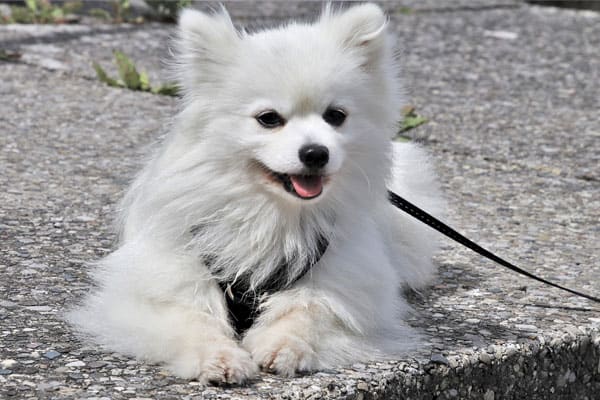
Samoyeds may be cute as can be with their white fluffy coats and big button eyes, but they are a whole lot of dog in a relatively compact canine package.
In other words, the Samoyed dog breed is typically not viewed as a breed suitable for a first-time dog owner.
These dogs are a lot of work! They are high-energy and active and vocal and this is not going to be the right mix for every dog owner or family. In this article, learn what owners and dog trainers say about when do Samoyeds calm down.
When Do Samoyeds Calm Down?
Samoyeds are not a “calm” dog breed, which means the most correct answer to the question of when do Samoyeds calm down is “never.” However, Samoyeds will be at their most active in late puppyhood and early adulthood.
Hear About Samoyed Energy Levels from a Samoyed Owner
In this short YouTube video, you can hear first-hand from a Samoyed owner about these dogs’ two energy levels: “full speed” and “stop.”
As she shares in the video, her Samoyed, Yeti, walks at least two to three miles a day and she throws the ball with him many times during the day and she takes him to the dog park so he can play with other dogs.
What Age Will a Samoyed Start to Calm Down?
As this Samoyed Reddit thread highlights, the first year to three years is the most challenging in terms of managing your Samoyed dog’s energy levels.
This is not unusual for either a Samoyed or any dog breed. During the first one to three years of life, there are many changes taking place on every level.
Physical, your Samoyed is growing and developing skeletally, in their gastrointestinal system, with teething and so many other physical changes.
Mentally, your Samoyed is adjusting to one change after another, from leaving mom and coming to live with you to toilet training, obedience training, crate training, and other routine changes.
Your Samoyed is also getting to know you and you and your dog are developing a bond of trust and mutual respect. It can take a few years to let all this sink in!
If you do a great job training your Samoyed and make sure your pup has enough daily enrichment and activity for both body and mind, by 24 to 36 months of age, you will start to see your dog downshift into a more balanced daily routine.
Understanding the Unique Samoyed Growing Up Period
According to the American Kennel Club (AKC) breed profile, the Samoyed dog is considered a medium-size dog that typically weighs less than 65 pounds in adulthood.
This is relevant because, in the majority of cases, smaller dog breeds will grow up faster than large or giant dog breeds.
The Samoyed is an exception to this general rule. These dogs have a long puppyhood.
While the Samoyed typically does reach their full adult size in 12 months, what takes longer is their emotional, social, and behavioral development.
Mentally, the Samoyed is never going to mature in a way that reflects the “typical” pet companion canine. These dogs remain independent in their minds throughout life.
This starts to make a lot more sense once you learn more about the Samoyed breed’s unique history and breed development, which we will look at here next.
Why Is the Samoyed the Active, Energetic Breed That They Are?
In order to have the best possible experience when choosing a Samoyed for your dog, it is vital to understand why these dogs behave differently than so many other popular pet dog breeds.
The Samoyed breed got its start thousands of years ago in the far north of Russia in Asia. They take their breed name from the Samoyede tribal people who lived in Siberia and developed these dogs to help them haul, sled, hunt, and herd.
The Samoyed has all the hallmarks of a true working dog: the thick double layer coat, the intense energy level, the lightning-quick athletic frame, and the resonant high-pitched bark.
As the Minuteman Samoyeds Club explains, the Samoyed has never been regarded as a “pet” or companion canine breed.
Rather, these dogs were developed to serve in essential roles alongside their human carers. Samoyeds helped their people find food, defend their homes, protect and herd their livestock and haul goods (and humans) for short and long distances via sleds.
These dogs were developed to be tireless workers with intense drive and energy to run and run and run. They are brave and athletic. And with their thick coats, they can easily tolerate temperatures that would have us running inside to get warm!
This is a big part of why the Samoyed dog breed doesn’t act like your regular pet dog, even if your primary intention is to get a dog for a pet rather than a working companion.
How to Tell Problem Behaviors Apart from Normal Samoyed Breed Behavior
This Samoyed thread from a popular dog owner forum offers some really valuable insights into what can happen if a Samoyed is not properly trained and socialized from puppyhood.
As the more experienced Samoyed owners point out, there are certain key behaviors that are literally considered to be hallmarks of the Samoyed dog breed.
These behaviors include each of the following:
- Barking nonstop for any reason and no apparent reason.
- Displaying an intense drive and desire to run when outside.
- Having a strong prey drive to chase and herd and hunt.
- Stubbornness can show up as a refusal to obey commands.
- Obvious boredom and/or destructiveness if not provided with enough activity.
If the above set of behaviors does not sound appealing or at least tolerable and workable to you, then a Samoyed may not be the right dog breed to select.
Some dog owners welcome the challenge of training a difficult dog breed like the Samoyed, while others prefer more of a people-pleasing temperament for their pet dog.
The most important point to remember is that Samoyeds may be stubborn, but they are people dogs to their core and absolutely can be trained. But training alone will not make up for not meeting their daily needs for mental and physical activity.
What Activities Help to Calm a Samoyed Dog Down?
In the video you watched earlier here, you heard about the Samoyed dog’s two modes: full speed and stop.
A Samoyed dog that is getting plenty of physical and mental activity and enrichment each day will happily stop and take a nap or go to sleep at night.
This means the key to a happy, calm Samoyed is tiring your dog out!
This is simply not a dog breed that you can put out in the backyard and expect them to entertain themselves, as the Samoyed Club of America explains. A bored or lonely Samoyed dog is likely going to become destructive or develop problem behaviors.
You will need to exercise and play with your dog for at least two hours per day, going for walks or runs together, throwing the frisbee or the ball, brushing your dog’s coat, doing daily obedience training sessions, and more.
This is a very time-intensive dog breed and the commitment of daily time and energy is substantial. Not everyone has the type of daily schedule to accommodate this.
But if you want to spend this amount of time with your dog daily and you like doing athletic activity and exercise with your dog, then the Samoyed might be a great choice of companion canine.
Here are some fabulous activities you can do with your dog to keep your Samoyed calm when you are at home together:
- Go for jogs or walks or hikes together.
- Go to the dog park so your Samoyed can play with other dogs.
- Enroll your dog in canine athletics like agility and rally, which Samoyeds excel at.
- Do several short positive obedience training sessions each day.
- Play fetch or tug-of-war or some other fun interactive games.
- Get interactive dog puzzle games, treat feeder balls and snuffle mats for sensory enrichment.
When you pack your Samoyed’s day with these types of enriching, active pursuits, you are giving your dog a life that most closely reflects the type of active daily schedule they would have as a working dog breed.
This is ideal to make sure your Samoyed has the best quality of life and does not develop problem behaviors due to boredom or loneliness.
However, there is one safety caveat: make sure your veterinarian can verify that your dog’s bone growth plates have closed before doing any overly strenuous or vigorous play or exercise together.
Your vet can do a set of X-rays (usually around one year old) to make sure you are in the clear. Then you can run and play together as much as you want!

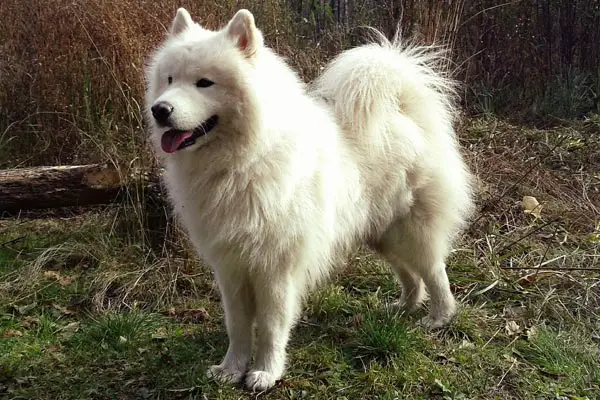
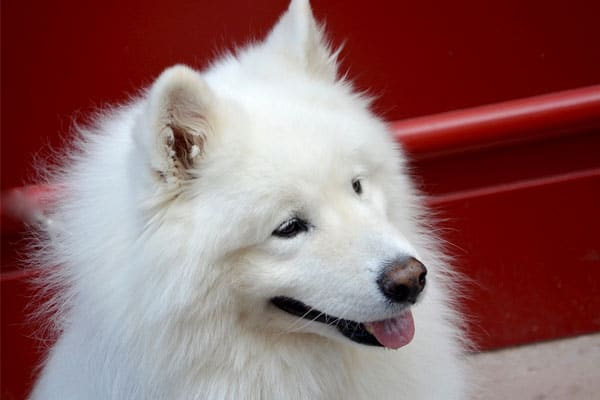
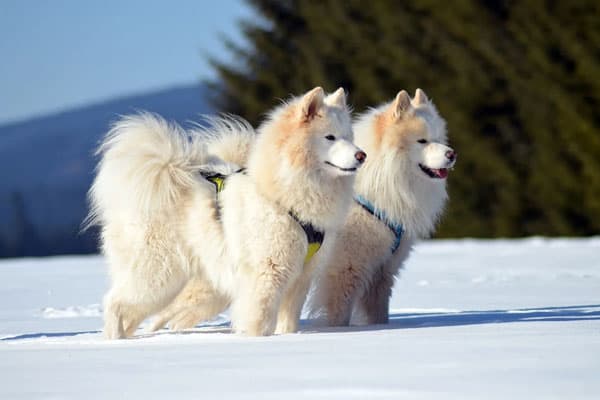
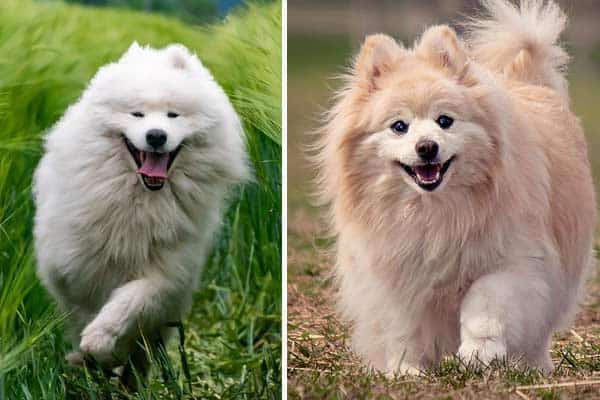

My one year old samoyed has been leashed trained using positive reinforcement but three months later, it is like starting all over again. I took him for a walk today with him pulling most of the time. When this happened, I had him go back and forth said commands “sit”, down” and “heel”. The pulling stopped for like five minutes and then he started jumping on his hind legs while on leash whenever a person acknowledged him. He was begging for attention but no one wanted to be near him. This was worse than yesterday.
It was very embarassing as if he was never trained. I was getting frustrated by this walk and came home early. It is as if he becomes a different dog when outside in public. He is paying less attention to me and more attention to the street,dogs, people, and cars.
I am debating wether to invest more money into stricter training such e-collar with K9 off leash. He is suppose to be an emotional support dog but he is stressing me out
Im starting to think this is not a training problem but just him being a samoyed, the energy, the whining, and pulling.
And although, it may be ok for a regular pet, it is not ok to do this as an emotional support/therapy animal that needs to travel . I am not sure if this breed is going to work out long term. I need a dog that can focus and will obey on the first command.
Also, will neutering help at all???